Bilkins' Folly review
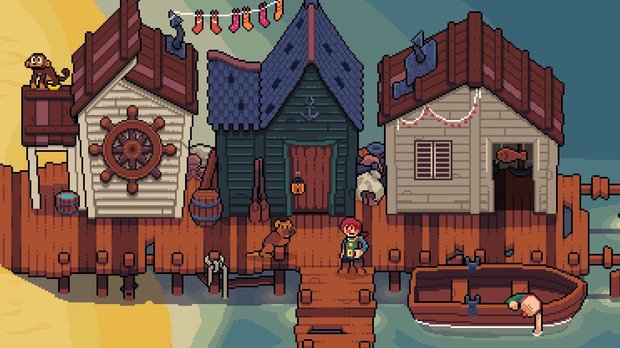
- 1 Comment
A delightfully charming, often amusing treasure hunting adventure proves to be a hidden gem well worth seeking out
My dad had a friend who was a serious treasure hunter, and growing up I would sometimes join in on a hunt. I remember as a young teenager poring over one of his printouts of something called the Lue map, a complicated diagram of pictorial symbols and mathematical lines and swirls that somehow may or may not point to a cache of gold buried somewhere around Colorado. The most treasure I ever found on one of our excursions was a couple of weathered old coins stashed back in a cleft of rock that bore mysterious inscriptions like “E Pluribus Unum” and “1967.” (If I had a nickel for every time I found one of those…) But the thrill of it was not so much in the find as it was in the search, the idea that treasure could be hiding anywhere, just a shovelful away from discovery. So I was pleasantly surprised to find that a game like Bilkins' Folly, Webbysoft’s isometric treasure-hunting adventure with bright cartoon visuals and snarky humor, could manage to capture that feeling as well as it does. If you can look past its occasionally unpolished surface, it’s truly a hidden gem.
Bilkins' Folly will probably remind you first of Monkey Island, what with all the pirates, islands, treasures, and sizable cast of humorous and eccentric characters both living and dead to banter with. But dig a little beneath the sandy surface, and you’ll find something closer to a Legend of Zelda game, if you were to replace the sword with a shovel. Indeed, Luke Webster, the primary developer of Bilkins' Folly, describes Link’s Awakening as his biggest influence, and it’s easy to see the similarity. As treasure hunter Percy, you’ll explore a set of small but densely packed islands, talk to locals for clues and side quests, collect handy items to help you traverse new areas (including bombs, for all those pesky cracked stone walls), and delve through caves and ruins solving puzzles and opening chests. But even with its inspirations, Bilkins' Folly doesn’t feel derivative, instead managing to forge its own path through the jungle, resulting in a compelling journey with only a few bumps along the way.
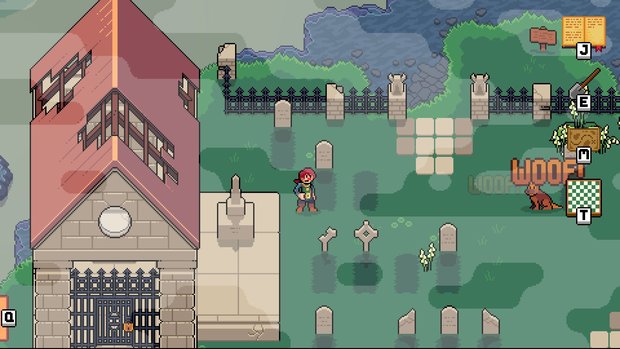
And a journey it is. The main quest alone is probably around 10-15 hours, depending on how quickly you solve the puzzles. I say “probably” because the game is chock full of side quests, optional treasure maps, and other diversions, and there’s so much to do at any one time that it is easy to wander off and forget the main story path entirely for a while. I finished the game in 32 hours, and that’s only because I finally stopped getting myself sidetracked and resorted at times to a walkthrough to keep me on course during the third of its three acts. The main path represents maybe only a quarter of the game’s available content, and I’ve still got plenty of cryptic clues to unravel and buried treasures to unearth within all the side content I missed. Even now, I’m tempted to jump back in and see what else I can find. It’s pure catnip to a completionist.
Percy Bilkins, who both looks and acts a bit like a red-haired Guybrush Threepwood, comes from a line of treasure hunters, but he’s looking for more than gold doubloons in this adventure. His grandfather and mother have both gone mysteriously missing as they themselves were on the hunt for treasure, and Percy is tracing their path to find them. Trouble is, he and his faithful canine companion Drayton have just been shipwrecked on Lonely Palm Island. In order to continue his search, he’ll have to acquire another seaworthy vessel, cobble together a crew, and work his way across the other nearby islands, gathering clues to his family’s whereabouts. And, of course, nothing in life is free, so he’ll have to raise some capital, and what could be a more reliable way to do that than find a heapload of buried treasure along the way?
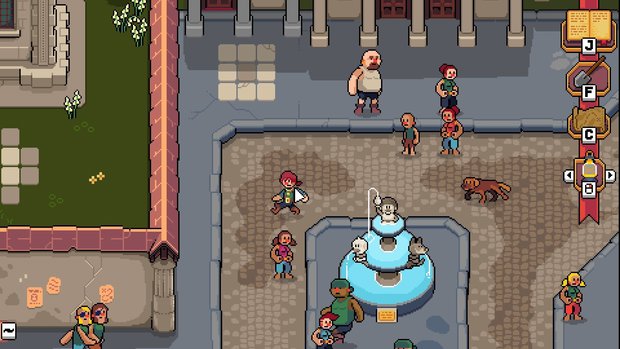
The most useful tool at your disposal is your shovel. At any point, you can dig directly beneath your feet, so long as you’re not standing on stone or wood, and Percy will take a couple of seconds to shovel down a few feet and bring up whatever he might find down there. But the real challenge for any treasure hunter is knowing where to dig, and that, at its core, is the main focus of the game. There’s actually a ton of stuff buried all around the islands, from old junk to gold coins to pieces of strange artifacts, and the way you’ll learn of their locations will vary. Most commonly, your source of knowledge is treasure maps. You’ll receive maps from people you talk to or through purchasing from a shop in town, and you can pull them out for reference as you wander the current island.
The simplest of these maps will show a sketch of some landscape—maybe trees, rocks, or coastline—and a good ol’ “X” drawn right where the treasure is. You’ll then use your observation skills to match what you see in the environment to what’s depicted on the map. Of course, things are rarely quite that simple. Sometimes the maps may be confusingly obscure in what the drawn symbols represent, or will contain further instructions that need to be followed in a particular sequence. Over time, new tools and methods of searching get added, and before you know it, you’ll be combining maps, solving riddles, using an in-game ruler to draw lines at certain angles on your main island map, and counting steps as you walk particular paths. It can get pretty challenging, especially towards the end, but whenever I would follow a hunch, attempt a dig, and hear the pleasing chime that sounds when Percy strikes treasure, the rewarding feeling of victory made me eager to tackle the next one.
Maybe the real treasure, though, is man’s best friend you bring along the way. At first, the pixelated pooch Drayton who followed me around didn’t seem to have much use. He has a nose for buried items, stopping to sniff the ground when he gets within a certain range, then barking and pawing at the spot he finds, but unfortunately, after digging up several of his “treasures,” it became clear that the only scent he picks up is that of garbage (one man’s trash is another dog’s treasure). Couple that with occasional pathfinding issues that caused him to get lost a little more often than I’d like (his “woof” will emanate from off-screen whenever you manage to leave him behind), and I was starting to think he might just be a digital version of my slightly unclever real-world dog.
Over time, though, Drayton’s presence grew on me. There’s a hefty upgrade system that allows the old dog to learn new tricks that you can use in your travels, like sit and stay, fetch, and trust fall (you know, the basics). As he finds buried junk and uses these skills, Drayton will gain experience points and eventually level up, allowing you to spend upgrade points on further abilities. You can also boost his experience points by giving him pets and hugs every so often. Some of these new skills will be necessary to complete the game, while others just make treasure finding a little easier. And when I discovered that the pieces of trash Drayton finds can be traded in for segments of a large and cryptic map, the mutt secured his place as an essential part of the adventure.

Besides scavenging for treasure, there are a few other things to do, like fishing and lockpicking, each of which involves its own puzzle type that increases in complexity the further you go. The main quest is also scattered with individual one-off logic brain-teasers reminiscent of a Professor Layton game, and while most of them will have familiar concepts to anyone who’s played their share of puzzle-centric games, there are enough twists to keep them fresh. That said, the lockpicking, which consists of fitting Tetris-like pieces into a particular shape, got pretty repetitive, especially later in the game when you’re picking “Master” level locks. While most of them are optional, some quest lines towards the end will require you to pick quite a few of these locks, which prove tedious after a while. And speaking of criminal activity, there’s one jailbreak puzzle involving turn-based stealth that, while seeming like a neat idea, was more frustrating than fun in practice, requiring several retries. When I finally broke out, I felt free in more ways than one. Still, on the whole, these extra puzzle types are yet another welcome addition to an already packed game.
The difficulty of the puzzles is—wait for it—all over the map (yo ho ho), but for the most part the challenge of the main path ramps up fairly evenly. I played through almost the whole game on “hard mode,” a menu toggle that disables some hints and makes a few of the maps a little more cryptic, but I actually found it pretty manageable—right up until about the last quarter of the game. For at least the first half, the maps and riddles are limited to the island you find them on. But towards the end, the treasure hunts become much larger in scope and intricacy, often requiring travel across multiple islands to solve. This really tested my resolve, and I eventually turned off hard mode, only to discover it didn’t help me that much, as the only additional clarity I got was for things I’d already deduced. When you consider all the incomplete side quests and strange maps I still have in my inventory that I have yet to decipher, it’s safe to say that beneath all the jokes and friendly visuals lies a treasure trove of truly tricky trials. (Say that five times fast.)
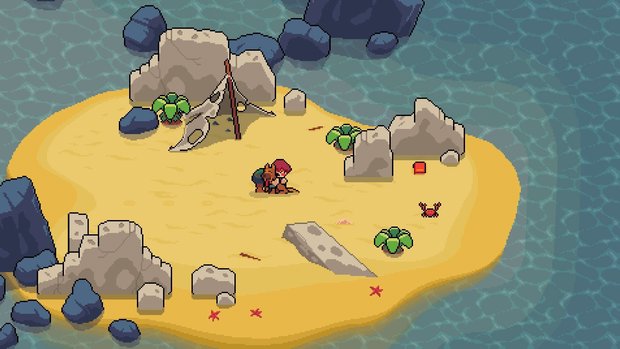
Speaking of visuals, the 2D bird’s-eye presentation is richly colored in warm, tropical tones, but it’s the animation that’s particularly striking. Characters bob and bounce at rest, Percy’s walk is delightfully exaggerated, and Drayton’s movement is especially impressive as he trots, sniffs, wags, and runs in circles in a way that I’m sure any dog lover will lap right up. The frame rate is low, but the animation successfully manages to be expressive in a way that’s hard to get right in a pixel art style. The breezy, jaunty tunes and ambient sounds of waves, seagulls, and creaking wood are well-chosen and support the visuals nicely. While there’s no voice acting per se, there’s a kind of Sims-like gibberish that gets used during dialogues. It adds some whimsy, but during some of the longer conversations it started to grate, so I was glad to see that the voice volume could be turned down independently of other sounds.
The user interface generally looks nice as well, but there are some rough edges. With all the menus, maps, quests, and other features, it seemed like the UI was struggling to keep up. Text would occasionally stretch beyond its intended frame, or certain overlays would fail to disappear when expected, requiring a bit of fiddling in order to put things back in order. Also, with so many menus, it can be a little clunky to find and navigate to what you’re looking for at a given moment. It’s nothing game breaking, but enough to draw unnecessary attention to itself from time to time.
Towards the end, the story that once seemed like a McGuffin sort of plot, mostly there to give you a reason to sail from island to island, suddenly starts carrying more emotional weight—or at least tries to. I’m not saying it’s completely unsuccessful on that front, and there are a couple of genuinely touching moments, but it does go to some oddly dark places given the tone of the rest of the game. And while, say, a Pixar film can deftly balance humor with pulling heartstrings, here the sudden seriousness seemed jarring enough that I wondered if it was a setup to some rug-pull of a joke. Still, I admire the attempt, and there’s a bittersweetness to it that I think actually carries some worthwhile themes. I just wish better effort had been made to weave it more prominently throughout the rest of the story.
Final Verdict
Bilkins' Folly is a buried treasure that I’m happy to unearth a little for you. It caught my eye when it first launched but was soon lost to the continual tide of other new releases coming in. I finally dug it back up during an otherwise slow month, not quite sure what to expect, and I’m glad I did, as I thoroughly enjoyed the 30-plus hours I spent solving its many secrets (or not yet solving, in a few cases) and chuckling at its Monkey Island-esque humor. There are some pretty tricky puzzles, especially towards the end, that may be best suited for players with enough patience to try theories and mull over maps, but it carries the ethos of an open-world game with lots of things to do, areas to explore, and leads to follow at any given time, so you’ll rarely be stuck without some new treasure to pursue. While some uneven storytelling, occasionally unwieldy UI issues, and a few tedious logic puzzles give it a little grit, it’s easy to brush most of that aside, because the rest is pure gold.
Hot take
Packed with many hours’ worth of puzzles to solve, secrets to uncover, and plenty of jokes, Bilkins' Folly finds the sweet spot that combines a light and humorous presentation with a compelling gameplay loop of tricky treasure hunting that has deeper layers than you might expect.
Pros
- Cryptic maps and layered secrets make for an engaging treasure hunting experience that’s challenging yet accessible
- Winsome cast of eccentric characters and comedic dialogue that’s often genuinely funny
- Copious side quests and nonlinear approach to puzzles means there’s always plenty to do and explore
- Your dog Drayton is a highly endearing and well-utilized companion
Cons
- A smattering of tedious or frustrating puzzles
- Dog’s pathfinding and some UI issues could use ironing out
- Gibberish voices can grate during long dialogues
- Heavy themes towards the end don’t quite match the otherwise playful and humorous tone
Brian played Bilkins' Folly on PC using a review code provided by the game's publisher.


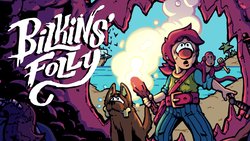


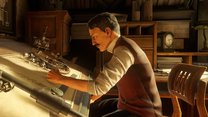

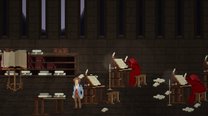
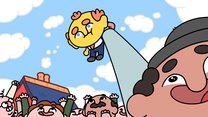
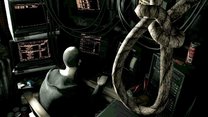

1 Comment
Want to join the discussion? Leave a comment as guest, sign in or register in our forums.
Ooh! Got this based on the review and really quite liking it so far, so thanks.
Reply
Leave a comment